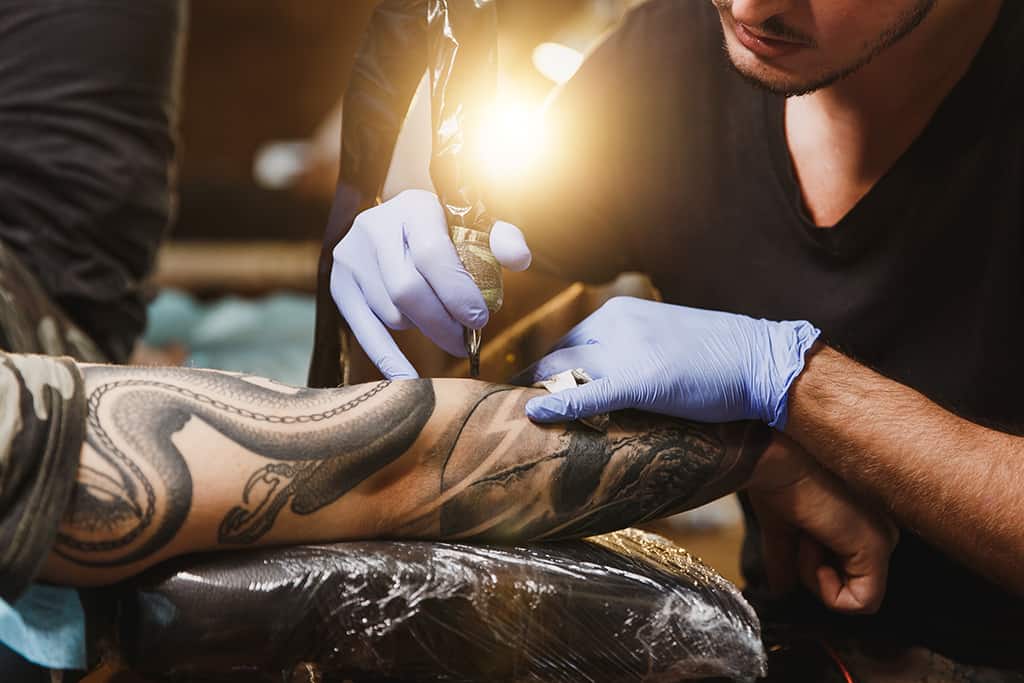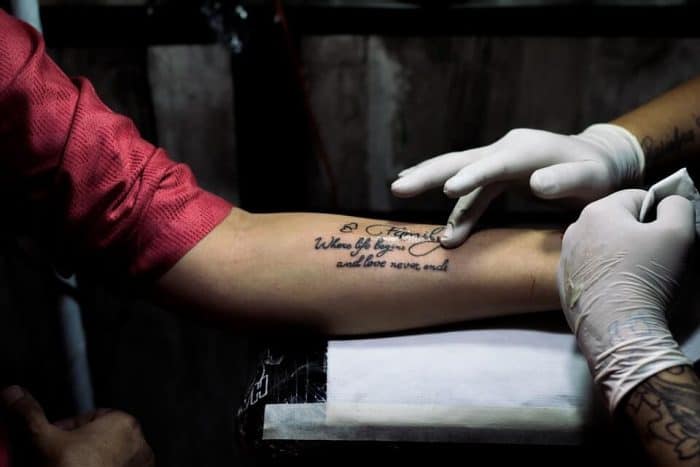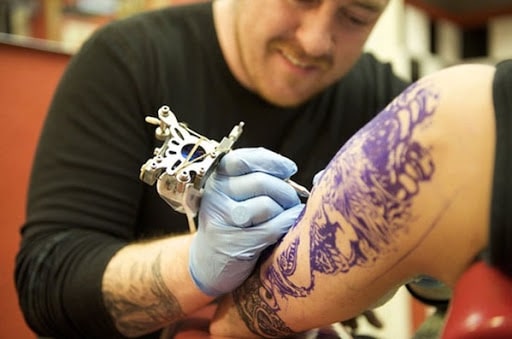Today we will discuss how to properly do the care for tattoos immediately after application and during the first month. The article is based on real experience, so all the tips and recommended medicinal formulations are personally checked.
A few words of advice: you cannot treat a tattoo as an ordinary decoration. This is a living creature capable of telling a lot about its owner, therefore, in the first days of its “life”, like any living being, it needs care and attention. If you do not want the skin to become inflamed within a week after application, the drawing to lose its sharpness, to get faded or partially changed color, then read and remember.

General Rules of Tattoo Care
Let’s start with three simple rules. If you don’t adhere to them, no amount of care will guarantee your tattoo brightness and clarity.
First: try to spend at home 5-7 days after application. Firstly, during this period, the tattoo is most vulnerable to sunlight. Secondly, it is important to prevent infection from entering the bloodstream, and for this, it is necessary to correctly and timely process the application surface. Thirdly, there is a risk of damage to the pattern even from the simple rubbing of the skin with clothing. Tested on our own experience: a week of calm and measured care without gyms and football with friends guarantees high-quality healing and the subsequent attractive appearance of the tattoo.
Second: perhaps this is obvious, but it will never be superfluous to repeat – before choosing a tattoo artist, study the portfolio and reviews on the Internet, and entrust the work with your skin only to an experienced professional! Important: no follow-up care will correct the fuzziness of the lines caused by the inability of the hitter to extinguish the vibrations of the machine, and will not save you from scars and minced meat, into which an amateur will turn your skin, clumsily trying to even out the color of the surface!
Forget once and for all about tempting discounts for the work of “novice craftsmen” or friends who beat a tattoo for a bottle of beer with a homemade machine. Sometimes they succeed, but only sometimes. Alas, there are more depressing examples.
Third: if you are allergic to dyes if you have low clotting or skin diseases, if you have colds, diabetes, bronchial asthma, during pregnancy or lactation, or if you are drunk.

Caring for Tattoos in the First Days after Application
The tattoo artist will apply an antiseptic to the newly filled tattoo and cover it with a regenerating compress. This will protect the pattern and affected skin from infections and unwanted interactions with the outside world. You can remove the compress after 5 hours, but it is better to wait 12 hours when capillary bleeding will probably stop. If removed before 5 hours of wearing, the ichor forms a crust, the removal of which can harm the brightness and clarity of the pattern. A healing compress from a film should be removed easily, but if it sticks, slightly moisten it with warm water, and it will come off.
After removing the protective coating, wash off the ichor and antiseptic with liquid soap and warm water. No washcloths or cloths, do everything by hand. Use a paper towel or tissue to dry the tattoo.
Next, we process the surface of the tattoo. Solutions are suitable:
- Miramistin
- Chlorhexidine.
The solution is applied with cotton swabs, which are changed as needed. If the tattoo is large, work its surface from the center to the edges, while “going” to the “clean” areas of the skin around the tattoo perimeter.
The next step is to apply the medicinal composition. No baby creams or oils. Verified formulations are the next ones, Do not mix products. Choose one formulation for each stage and apply only until healed completely.
- Bepanten +
- Solcoseryl
- D-Panthenol
- Boro-Plus
- Tattoo Ointments
Then, for 7-10 days, moisten the tattoo with warm water 3 times a day so that a crust does not form. After the water treatment, dry the tattoo with a paper towel or tissue and cover it with a medicated compound. When the affected surface ceases to become wet due to lymph secretion, exclude warm water. Just apply the medicated formulation to dry the skin. In case you are sensitive to ointments and prefer to heal with creams during any point of their tattoo healing process, you can go with a quality tattoo aftercare cream.

Tattoo Care Within the First Month
In their first month of life, tattoos are still very vulnerable. Ultraviolet rays, chlorine, alcohol, sweat, and mechanical stress can cause loss of image shape, as well as fading or change in the color palette. To avoid this, follow these simple rules.
Do Not Scratch the Application Site, as well as the Skin Around the Application Site
You will desperately want, so it’s time to demonstrate your “iron” will. If you give “freedom to your hands”, side effects cannot be avoided: tissue regeneration will slow down, the tattoo will fade, and inflammation will occur. If the surface is inflamed – no self-medication, immediately drop everything and run to the doctor. Does the itch get overwhelmed? Lubricate the tattoo with a LITTLE amount of olive oil, but this is an extreme case.
Protect Your Tattoo from UV Exposure
This applies to both a beach holiday and a solarium. Do not get tattoos before vacation at sea: the affected skin should not steam, sweat, and get wet, and the saltwater actively pushes the paint out. In the first month, appear on the street only in clothes that cover the place of application, and so that the fabric does not stick, apply cling film over it. If you really want to show off a tattoo, and even your “iron” will is no longer your help here, use a sunscreen with protection class A and an SPF value of more than 50 – in the first week, and more than 30 – in the first month (all this is indicated on the box with the composition).
Avoid Exposure to Sweat, Alcohol, Chlorine, and Vaseline
Vaseline discolors tattoos, so all cosmetics that contain it are taboo. Have you seen guys in the movies happily pouring alcohol on their tattoos immediately after applying them? This is not for you. As well as pools, saunas, and gyms. Alcohol, chlorine, and sweat will make the tattoo fade much ahead of time (life hack: cling film or a bandana tied will help).
Get More Vitamin E
Eat foods with this vitamin, take pills, and drink plenty of water. This will help maintain the brightness of the tattoo. There are means that, according to the descriptions, extend the “life” of a tattoo by 5-6 years, but personally I have not yet had time to experience this urban legend in practice.

The Bottom Line, Taking Care of a New Tattoo
Perhaps the first days of the tattoo will lack brightness. This is the norm, the color will subsequently be restored. But if “gaps” or discolored spots appear in the picture, it means that not all pigments have taken root during the healing process (remember which of the rules you violated). This can only be corrected for correction.
Treat your tattoo with respect, and then it will “live” happily ever after, delighting you and those around you.
